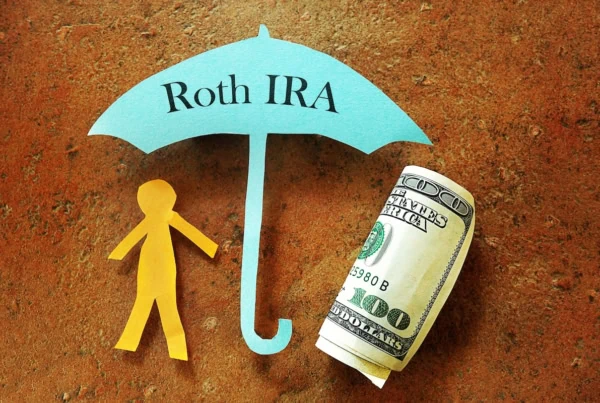Small business owners and self-employed people need to save for retirement just like everyone else. But unlike ordinary workers who might have access to a 401(k) or other employer-sponsored retirement plans, they must come up with their own retirement savings plan. That’s where a simplified employee pension (SEP) plan comes into play.
With a SEP plan, small business owners and the self-employed can squirrel away money for their own and their employees’ retirement. The business owner or self-employed person contributes to a special type of traditional individual retirement account (IRA)—called a SEP IRA—for him- or herself and each eligible employee (workers can’t contribute their own money to the SEP IRA account set up for them). That money grows on a tax-deferred basis, which helps everyone involved save more for retirement while they’re still working.
However, there are SEP IRA contribution limits that prevent business owners and self-employed individuals from putting too much money into these tax-advantaged accounts each year. It’s important to know the contribution limits, because you lose the tax benefits and could be hit with a penalty for any SEP contributions over the limits.
But don’t worry—we’ll go over all the SEP IRA contribution limits and related rules for both 2024 and 2025. We’ll also make sure you understand how SEPs work and how money in a SEP IRA is taxed. After going through the material below, small business owners, self-employed people, and workers with a SEP IRA in their name should know the maximum amount that can be contributed to their SEP IRA this year.
Related: SEP IRA vs. Roth IRA: What’s the Difference?
How SEP IRAs Work
Any business owner with at least one employee, or any self-employed person (e.g., a freelancer), can set up a SEP IRA plan. You have until your business’s tax filing deadline (including any tax filing extensions) to set up a plan for the year.
While business owners and self-employed individuals contribute to their own SEP IRA, business owners with employees must also contribute to a separate account set up for each eligible employee. SEP IRA contributions are fully vested, so an employee owns 100% of any money in his or her account.
It’s up to the business owner or self-employed individual to set the contribution amount each year (within the contribution limits discussed below), which is a percentage of the recipient’s compensation. However, the contribution percentage must be the same for everyone—including all eligible employees.
Although employees can’t contribute their own money to the SEP IRA set up for them, they can make their own investment decisions. Funds in SEP IRA accounts can be invested in stocks, mutual funds, exchange-traded funds (ETFs), money market funds, savings accounts, and the like. However, there are some restrictions on coins, collectibles, real estate you get a direct benefit from, and some types of derivative positions.
WealthUp TIP: You can have all or part of your federal income tax refund deposited into your SEP IRA. See Form 8888 and the related instructions for details.
Who Is an Eligible Employee?
To be an eligible employee for SEP IRA purposes in 2024 and 2025, a worker must:
- Be at least 21 years old
- Work for the employer at least three of the past five years
- Earn a minimum of $750 in compensation during the year
An employer can establish less restrictive requirements, but they can’t adopt requirements that are more restrictive than the ones listed above. So, for instance, an employer can establish a SEP IRA plan for all employees regardless of age, service time, or compensation. However, a plan can’t require employees to be at least 22 years old, work for business at least four of the last five years, and earn at least $800.
SEP IRA plans can exclude employees covered by a union agreement for retirement benefits or nonresident alien employees.
Related: How to Start a Retirement Plan + Build Retirement Savings
Tax Advantages of SEP IRAs
Contributions by a business owner or self-employed person to SEP IRAs are generally tax deductible. However, any contributions above the annual contribution limits (as described below) are not deductible.
In addition, money put into a worker’s SEP IRA by a business owner isn’t included in the employee’s compensation (i.e., it’s not counted as wages or other gross income). As a result, it isn’t treated as taxable income when the employee files his or her federal income tax return.
Since a SEP IRA is a traditional IRA (it can’t be a Roth IRA), taxes on funds in a SEP IRA are deferred until the money is withdrawn. When money is taken out of a SEP IRA, income taxes must be paid on the amount at the same federal tax rate applied to the account holder’s wages, tips, taxable Social Security benefits, and other “ordinary” income.
Although there are exceptions, withdrawals from SEP IRAs made before the account holder is 59½ years old are generally hit with a 10% early distribution penalty.
Furthermore, required minimum distributions (RMDs) from a SEP IRA kick in when the account holder turns 73. An account holder’s first RMD is due on April 1 of the year after his or her 73rd birthday. RMDs for all other years are due by the end of the year.
YATI Tip: Beginning in 2033, RMDs won’t be required until the account holder turns 75.
Where Can You Open a SEP IRA?
SEP IRAs can be opened with most major brokerage firms. For example, Fidelity offers SEP IRAs with no account fees, no minimums to open an account, and no closing costs. There are also no commission fees for online U.S. stock, ETFs, and options trades.
Large brokers like Fidelity also offer a wide range of stocks, ETFs, bonds, mutual funds, and more investment options. You might have to pay fees for mutual funds and other managed accounts with a Fidelity SEP IRA, but these are fairly standard with other providers, too.
- Fidelity, one of the largest brokers on the planet, offers low-cost investing that includes $0 commissions on U.S. stock, ETF, U.S. Treasury, and Fidelity mutual fund trades.
- Investing with Fidelity opens up access to its zero-expense ZERO line of index mutual funds.
- Put a variety of investing and trading tools to work, including Fidelity's stock research dashboard, stock screener, and Active Trader Pro.
- Very good selection of available investments
- Commission-free trading on stocks, ETFs, U.S. Treasuries, all Fidelity mutual funds and some mutual funds from other fund families
- Above-average options fees
- No futures trading
Related: Retirement Saver’s Credit: What Is It, How Much, Who’s Eligible + More
What Are the Contribution Limits for SEP IRAs?
For 2024, employer contributions to an employee’s SEP IRA can’t exceed the lesser of:
- 25% of the employee’s first $345,000 of compensation ($350,000 for 2025)
- $69,000 ($70,000 for 2025)
Example
Riley is a small business owner with a SEP IRA. Kyle, who is one of Riley’s employees, earns $350,000 in 2024. Even though 25% of $350,000 is $87,500, and 25% of $330,000 is $82,500, Riley can’t contribute more than $69,000 to Kyle’s SEP IRA for the 2024 tax year, since that’s the lesser amount.
The same contribution limits apply to small business owners and self-employed individuals contributing to their own SEP IRAs. However, if you’re self-employed, your compensation is equal to your net earnings from self-employment, minus any tax deductions for contributions to your own SEP IRA and half of your self-employment tax.
This requires a special calculation, the effective result of which is that contributions by self-employed people to their own SEP IRA accounts can’t be more than 20% of the net earnings from their business.
YATI Tip: Unlike with 401(k) plans, traditional IRAs, Roth IRAs, and certain other retirement plans, additional “catch-up” contributions for people who are at least 50 years old aren’t allowed with SEP IRAs.
Related: Retirement Plan Contribution Limits and Deadlines
Overall Contribution Limit for 401(k) Plans
Self-employed people can set up a SEP IRA even if they participate in a 401(k) plan or other employer-sponsored retirement plan at another job. However, this could affect the overall annual contribution limit for 401(k) plans (i.e., the maximum contribution limit for both employee and employer matching contributions).
Just like 401(k) plans, SEP IRAs are considered “defined contribution plans.” Basically, that means they primarily provide retirement benefits to employees and other plan participants based on the amount contributed to the participant’s account.
As a result, any contributions to a SEP IRA count against the overall annual contribution limit for defined contribution plans. For 2024, the maximum is the lesser of:
- 100% of the participant’s compensation
- $69,000 for workers under 50 years old and $76,500 for workers who are at least 50 years old ($70,000 and $77,500, respectively, for 2025). Workers ages 60 to 63 can enjoy a higher catch-up contribution limit of $11,250 for 2025.
So, if a self-employed person puts money in both a SEP IRA and a 401(k) account during the year, and is eligible for matching 401(k) contributions from his or her employer, the combined total of all contributions to both accounts can’t exceed the overall contribution limit for defined contribution plans.
Example
Woody is 40 years old and works for a business that offers a 401(k) plan with an employer match. He also does freelance work on the weekend and set up a SEP IRA as a self-employed person for his side business. His total compensation for 2024 is $200,000. If he contributes $25,000 to his SEP IRA in 2024, the combined total of all 401(k) contributions can’t exceed $44,000 ($69,000 – $25,000 = $44,000).
What If You Exceed the SEP IRA Contribution Limits?
There are a number of negative consequences if your contributions to a SEP IRA exceed the annual contribution limits—so be careful!
First, for business owners and self-employed people, contributions to a SEP IRA in excess of the annual contribution limits are not tax deductible in the year you make the contribution. You can carry excess contributions over to future years and deduct them later, though. However, any amount carried over to a later year reduces the annual contribution limit for that future year on a dollar-for-dollar basis.
Excess contributions to a SEP IRA might also be subject to a special 10% excise tax. This penalty is calculated and reported on Form 5330.
In addition, if too much money is deposited into an employee’s SEP IRA, the excess employer contributions are treated as taxable income for the employee.
Related: How to Avoid Taxes on Social Security Benefits
Are Contributions to a Traditional or Roth IRA Also Allowed?
You can still contribute to a traditional or Roth IRA (up to the annual limits for traditional and Roth IRAs noted below) if you’re also participating in a simplified employee pension plan. However, while contributions to an employee’s SEP IRA don’t reduce the amount the worker can contribute to another IRA that year, each dollar contributed to your own SEP IRA is subtracted from the annual contribution limit for other IRAs.
In addition, the tax deduction for contributions to a traditional IRA might be reduced or even eliminated if you or your spouse have a SEP IRA and your income is too high.
On the bright side, you might be able to combine a traditional IRA and your SEP IRA if the SEP plan permits non-SEP contributions to your account. If that’s the case, you won’t have to open a separate account to make traditional IRA contributions.
Unfortunately, since a SEP IRA is a type of traditional IRA, you can’t combine a SEP IRA with a Roth IRA.
Traditional IRA and Roth IRA Contribution Limits
For 2024 and 2025, the annual contribution limit for IRAs is $7,000 if you’re under 50 years old at the end of the year. If you’re 50 or older by Dec. 31, 2024 or 2025, you can put in up to $8,000 for the year.
The annual contribution limits apply to the combined total of contributions to all your IRAs—both traditional and Roth IRAs. For example, if you’re under 50 and put $2,000 in a traditional IRA in 2024, the most you can put in a Roth IRA for the tax year is $5,000.
Contributions for the year to all IRAs also can’t exceed the account holder’s earned income for the year. According to the IRS, earned income includes “wages, salaries, tips, professional fees, bonuses, and other amounts received for providing personal services.”
Self-employment income also counts as earned income. However, if you’re self-employed, don’t include any contributions made to retirement plans on your behalf or the deductible part of your self-employment taxes.
Roth IRA Income Limits
The annual contribution for Roth IRAs is gradually reduced to zero if your income is within a certain range. For 2024, your annual contribution limit is phased out if your modified adjusted gross income for the tax year is:
- $230,000 to $240,000 if your filing status is married filing jointly or surviving spouse ($236,000 to $246,000 for 2025)
- $146,000 to $161,000 if your filing status is single, head of household, or married filing separately and you didn’t live with your spouse at any time during the year ($150,000 to $165,000 for 2025)
- $0 to $10,000 or more if your filing status is married filing separately and you lived with your spouse at any time during the year
Income limits don’t apply to traditional IRAs. So, you can still contribute to a traditional IRA regardless of your income. However, the deduction for contributions to a traditional IRA might be limited by your income if you or your spouse is covered by a retirement plan at work.
Related: Estimated Tax Payment Due Dates
SEP IRA vs. Solo 401(k) Plan
Another retirement plan option available to self-employed people is a solo 401(k) plan. One key advantage of a solo 401(k) is that a self-employed person can contribute to an account as both an employer and employee, while a SEP IRA only allows employer contributions.
But which type of plan is better for you depends on your situation and goals. To help you decide between the two, take a look at some of the other key differences between solo 401(k) plans and SEP IRAs described below. A handy comparison table is also provided for your convenience.
Roth Accounts
You can have a Roth solo 401(k) account with “after-tax” benefits (i.e., contributions are made after income tax is paid on the deposited funds). However, you can’t have a Roth SEP IRA.
Contribution Limits
The total contribution limit is the same for a solo 401(k) and SEP IRA ($69,000 for 2024; $70,000 for 2025). However, solo 401(k) plans offer catch-up contributions, while SEP IRAs do not. So, if you’re at least 50 years old, the overall contribution limit for a solo 401(k) plan is $76,500 in 2024 ($77,500 in 2025) and those between the ages of 60 to 63 can add an additional $11,250.
In addition, with a SEP IRA, the entire limit is based on 25% of compensation. However, with a solo 401(k), the 25% cap only applies to the employer contribution (not to the employee contribution). As a result, a solo 401(k) plan might provide more saving potential for some self-employed people.
Loans
You can’t borrow from a SEP IRA. However, a solo 401(k) plan can permit loans up to $50,000 or 50% of your account balance, whichever is lower.
Effect on Taxable Income
Putting money in both a SEP IRA and traditional solo 401(k) can lower your taxable income thanks to a tax deduction for contributions.
However, you don’t get a contribution deduction with a solo Roth 401(k). Instead, money in the account grows tax-free and you don’t have to pay taxes when you make withdrawals during retirement.
Required Minimum Distributions
Here’s a look at required minimum distributions for 401(k)s and SEP IRAs. Note: Starting in 2024, RMDs were no longer required for Roth 401(k) accounts.
2024 Comparison Table
| Traditional Solo 401(k) Plan | Roth Solo 401(k) Plan | SEP IRA | |
|---|---|---|---|
| Source of Contributions | Both Employer and Employee | Both Employer and Employee | Employer Only |
| Total Contribution Limits | $69,000 | $69,000 | $69,000; Capped at 25% of Income |
| Catch-Up Contributions | Allowed | Allowed | Not Allowed |
| Deduction for Contributions | Allowed | Not Allowed | Allowed |
| Loans | Allowed | Allowed | Not Allowed |
| Tax on Withdrawals In Retirement | Yes | No | Yes |
| Required Minimum Distributions | Yes | No | Yes |
2025 Comparison Table
| Traditional Solo 401(k) Plan | Roth Solo 401(k) Plan | SEP IRA | |
|---|---|---|---|
| Source of Contributions | Both Employer and Employee | Both Employer and Employee | Employer Only |
| Total Contribution Limits | $70,000 | $70,000 | $70,000; Capped at 25% of Income |
| Catch-Up Contributions | Allowed | Allowed | Not Allowed |
| Deduction for Contributions | Allowed | Not Allowed | Allowed |
| Loans | Allowed | Allowed | Not Allowed |
| Tax on Withdrawals In Retirement | Yes | No | Yes |
| Required Minimum Distributions | Yes | No | Yes |
Related:




![SEP IRA Contribution Limits [2024 + 2025] 1 SEP IRA contribution limits](https://youngandtheinvested.com/wp-content/uploads/SEP-IRA-contribution-limits-584x389.webp)
![SEP IRA Contribution Limits [2024 + 2025] 2 how SEP IRAs work](https://youngandtheinvested.com/wp-content/uploads/how-SEP-IRAs-work.webp)
![SEP IRA Contribution Limits [2024 + 2025] 3 Fidelity | Brokerage Accounts, Retirement Plans + More](https://youngandtheinvested.com/wp-content/uploads/fidelity-logo-transparent-symbol-test2.webp)
![SEP IRA Contribution Limits [2024 + 2025] 4 retirement savings SEP Roth IRA](https://youngandtheinvested.com/wp-content/uploads/retirement-savings-sep-roth-IRA.webp)
![SEP IRA Contribution Limits [2024 + 2025] 5 home office tax deduction](https://youngandtheinvested.com/wp-content/uploads/2019/01/calculator-calculation-budgeting-plan-finance.webp)
![SEP IRA Contribution Limits [2024 + 2025] 6 401k plan retirement savings](https://youngandtheinvested.com/wp-content/uploads/401k-plan-retirement-savings.webp)



